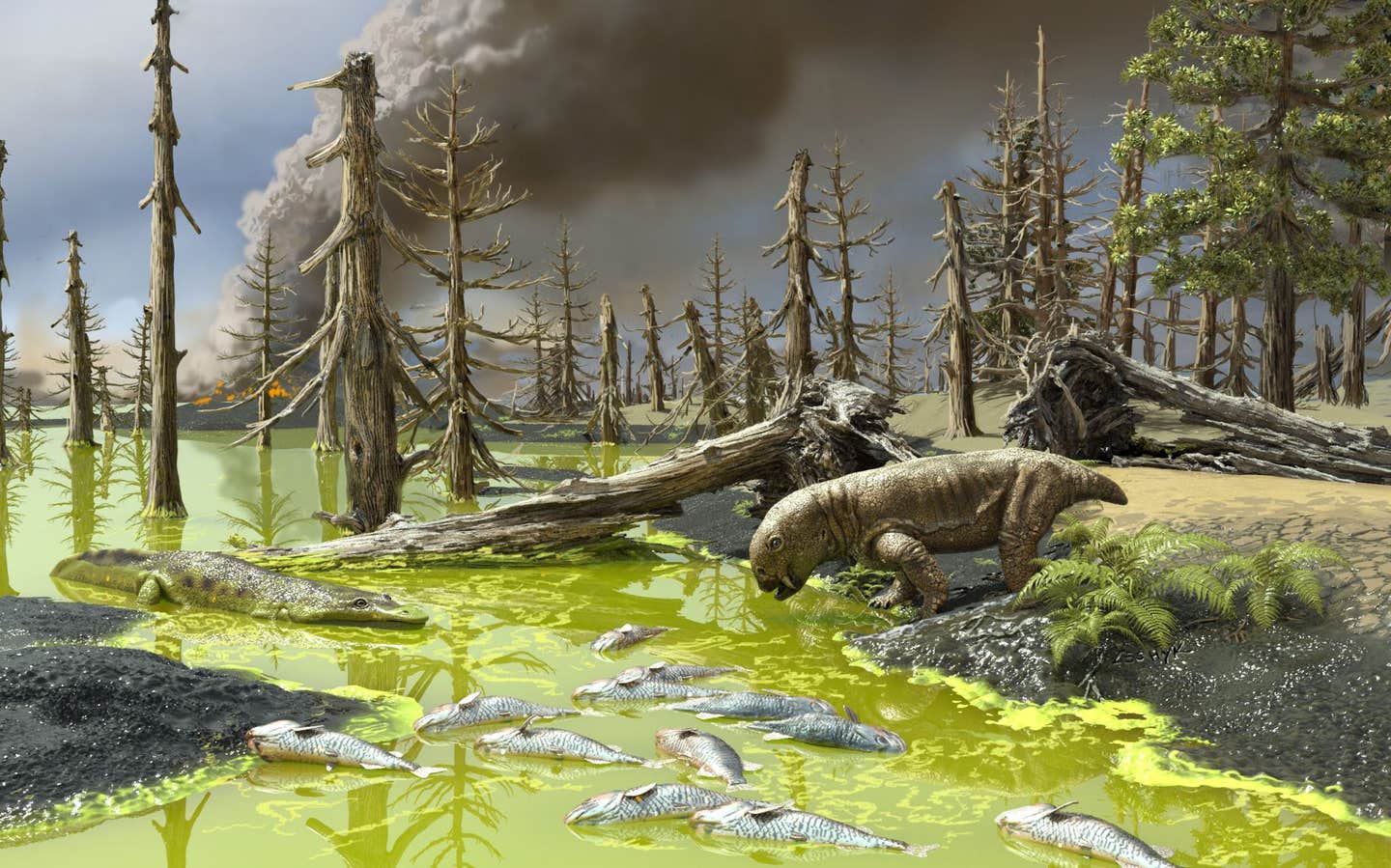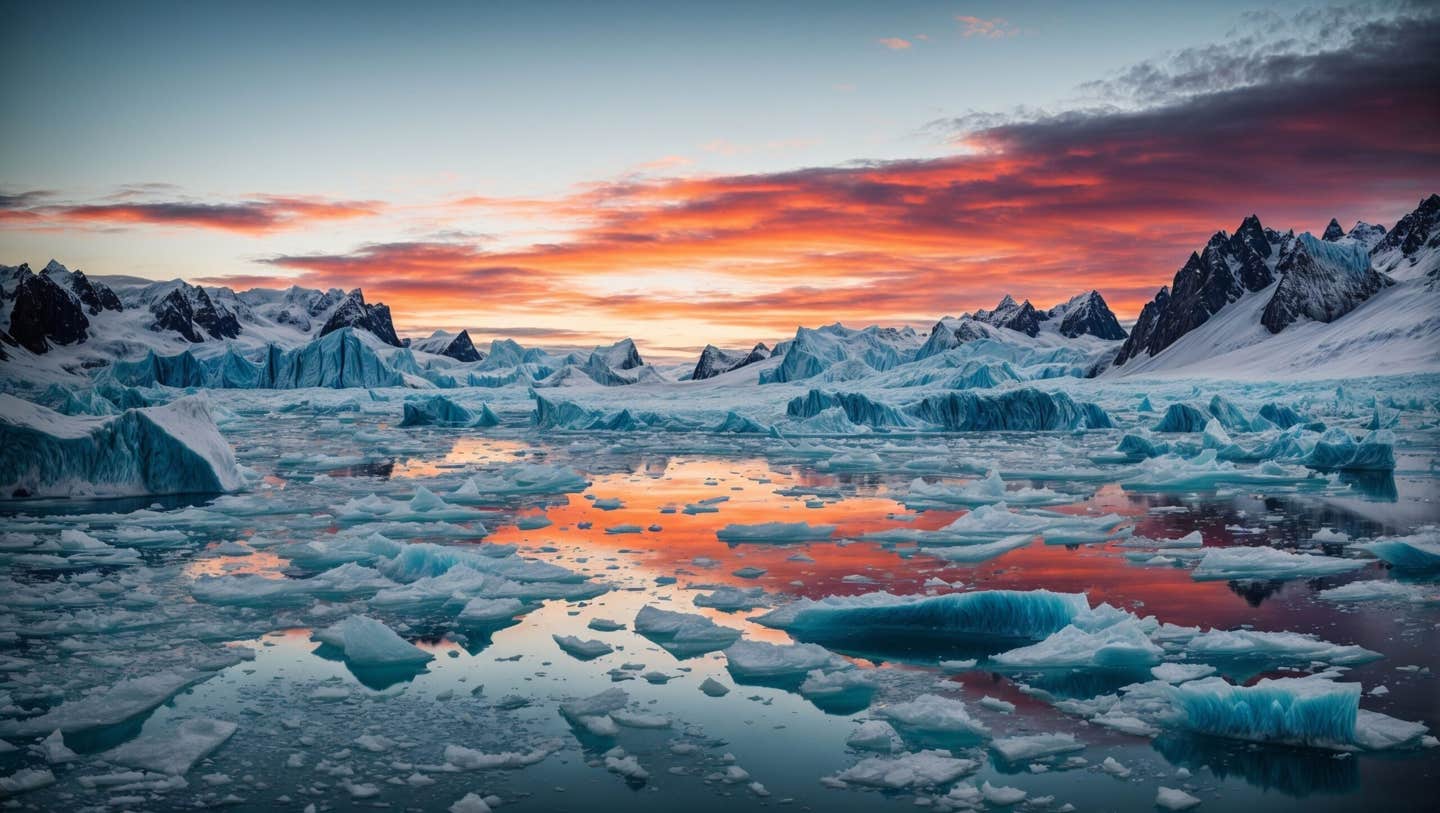Earth’s ‘Great Dying’ fueled 5 million years of global warming
New fossil data shows tropical forest loss during Earth’s Great Dying triggered a 5-million-year climate crisis.

A new fossil study reveals that the collapse of tropical forests during Earth’s deadliest extinction event triggered a climate crisis lasting millions of years. (CREDIT: CC BY-SA 4.0)
Roughly 252 million years ago, Earth experienced its deadliest known extinction. Known as the Permian–Triassic Mass Extinction, or “The Great Dying,” this cataclysm wiped out over 80% of marine species and nearly 90% of land-dwelling tetrapods. Yet what followed was just as alarming: a hothouse climate that lasted for about five million years.
Scientists have long suspected that massive volcanic eruptions in what is now Siberia released greenhouse gases that triggered the initial warming. But until recently, the cause of the prolonged heatwave remained a mystery.
A new study led by researchers from the University of Leeds and the China University of Geosciences now sheds light on this lingering planetary fever.
Their findings, published in Nature Communications, suggest that the collapse of tropical forests during the extinction severely reduced Earth's ability to remove carbon dioxide from the atmosphere. With fewer plants to absorb CO2, the planet was unable to cool down—even long after the volcanoes quieted.
Fossil clues to a fallen biosphere
To uncover what prolonged the super-greenhouse conditions, the research team turned to the fossil record. They focused on China, home to some of the most complete geological records from this ancient period. Decades of fossil collecting across deserts, mountains, and remote forested regions offered a rich archive of plant life before and after the extinction.
Dr. Zhen Xu from the University of Leeds led the analysis of these fossils, along with sediment clues that reveal past climate and environmental conditions. Xu, who studied under Chinese paleontology legends Professor Hongfu Yin and Professor Jianxin Yu, used this data to map changes in plant productivity through the extinction period. She also worked with Professor Benjamin Mills in Leeds to simulate the climate impacts of vegetation collapse.
What the data revealed was striking. Tropical peat-forming ecosystems, once responsible for drawing large amounts of CO2 out of the air, vanished almost entirely. This collapse of low-latitude plant life meant that Earth lost one of its most powerful natural climate regulators. “Critically, this is the only high temperature event in Earth’s history in which the tropical forest biosphere collapses,” said Xu. “Now, after years of fieldwork, analysis and simulations, we finally have the data which supports it.”
Related Stories
A broken carbon cycle
Normally, after a surge in CO2 from events like volcanic eruptions, Earth’s climate would gradually return to balance. This happens through natural processes like plant growth and chemical weathering, where CO2 is absorbed and locked into soils, rocks, or ocean sediments. But the new research shows that these systems were crippled during the Early Triassic.
In the absence of thriving tropical forests, carbon sequestration dropped sharply. As the team’s simulations show, this allowed CO2 levels to remain sky-high, keeping global temperatures dangerously elevated. “We will have fundamentally changed the carbon cycle in a way that can take geological timescales to recover, which has happened in Earth’s past,” said Mills.
The study suggests that Earth entered a new kind of climate state, one that was stabilized at a much hotter level. This “upper temperature steady state” was driven not just by excess carbon emissions, but also by the loss of the very ecosystems needed to pull that carbon back in. The result was a climate trap: even when the emissions slowed, the heat stayed locked in.
Warning signs for today
This ancient extinction holds clear warnings for the present. Today’s tropical forests, especially those in the Amazon and Southeast Asia, play a vital role in keeping Earth’s climate stable. If modern global warming causes these forests to die back—something many scientists fear is already starting—then the world may face a similar long-term warming, even if human emissions drop.
“There is a warning here about the importance of Earth’s present-day tropical forests,” said Mills. “If rapid warming causes them to collapse in a similar manner, then we should not expect our climate to cool to preindustrial levels even if we stop emitting CO2.”
This idea of a “tipping point” in Earth’s climate system is gaining more scientific support. Once crossed, some changes may become self-reinforcing and nearly impossible to reverse in human timescales.
The study’s authors believe that understanding the past is key to shaping the future. “Paleontology needs to embrace new techniques—from numerical modelling to interdisciplinary collaboration—to decode the past and safeguard the future,” said Professor Yin. His colleague, Professor Yu, emphasized the broader responsibility of this work: “Let’s make sure our work transcends academia: it is a responsibility to all life on Earth, today and beyond.”
A planet’s long memory
Although many factors contributed to the severity of the Permian–Triassic extinction, the fossil and climate data show that the long-lasting hothouse conditions were not only a result of volcanic activity. The researchers considered other theories, including changes in ocean chemistry and silicate weathering, but found that these alone could not explain why extreme warming lasted so long.
Instead, their modeling shows that the sustained loss of tropical vegetation explains both the timing and magnitude of the prolonged heat. This is also the only known period in Earth’s history where land plants faced a mass extinction-level event, leading to a dramatic “coal gap”—a time when no peat, and therefore no coal, formed due to the lack of plant matter.
The study adds weight to the idea that Earth’s climate system is deeply tied to its living ecosystems. When those ecosystems collapse, so too can the stability of the climate itself.
A story still being written
The lessons from 252 million years ago echo clearly today. As forests burn and biodiversity declines, the risk of crossing a climate threshold grows. The Great Dying serves as a grim reminder of how hard it can be for the planet to heal once its natural systems unravel.
But the researchers behind this study also point to a path forward. Through collaboration across generations and countries, and by combining traditional fossil research with new computer models, they’ve opened a window into Earth’s deep past—and, perhaps, into its near future.
As Professor Yu put it, “Earth’s story is still being written, and we all have a role in shaping its next chapter.”
More about the Permian–Triassic Mass Extinction
The Permian-Triassic extinction event, also known as the "Great Dying," was the most severe mass extinction in Earth's history, occurring about 252 million years ago. It marked the boundary between the Permian and Triassic periods and the Paleozoic and Mesozoic eras. This event is estimated to have wiped out around 96% of marine species and 70% of terrestrial vertebrate species.
Severity: It was the most devastating extinction event in Earth's history, with estimated losses of 57% of biological families, 62% of genera, and 81% of marine species.
Timing: The extinction occurred at the end of the Permian period, around 251.9 million years ago.
Cause: The exact cause remains debated, but it's widely believed to be linked to massive volcanic eruptions in Siberia, which triggered a cascade of environmental changes. These changes included a dramatic increase in atmospheric carbon dioxide, ocean acidification, global warming, and a decrease in oxygen levels in the oceans.
Consequences: The Permian-Triassic extinction drastically altered Earth's ecosystems, paving the way for the rise of dinosaurs in the subsequent Triassic period.
Evidence: Fossil records show a significant gap between the abundant life of the Permian and the sparse life of the early Triassic, indicating a major extinction event.
Note: The article above provided above by The Brighter Side of News.
Like these kind of feel good stories? Get The Brighter Side of News' newsletter.



